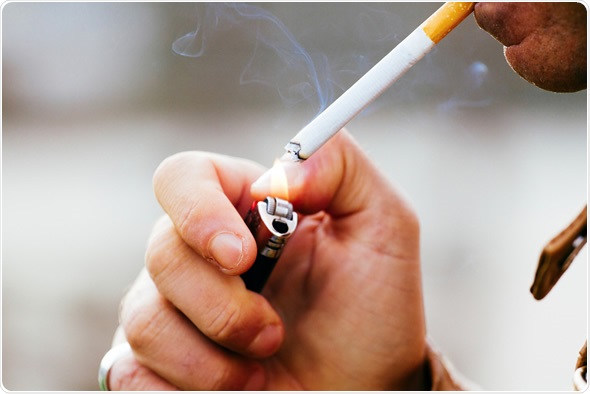For The Latest Medical News, Health News, Research News, COVID-19 News, Pharma News, Glaucoma News, Diabetes News, Herb News, Phytochemical News, Thailand Cannabis News, Cancer News, Doctor News, Thailand Hospital News, Oral Cancer News, Thailand Doctors
Smoking damages nearly every organ in the body. Whilst most people are familiar of its association with lung cancer, stroke and heart disease, it also has profound effects on the body’s largest organ – skin.
Unlike damage to your heart or lungs, the effects on skin are often outwardly visible for people to see. Not only is smoking related to the development of certain skin disorders, it is a major culprit in premature ageing of the skin. The aim of this article is to review the cutaneous effects of smoking.
The link between smoking and wrinkles has been known for many years. Smoking is an independent risk factor for developing wrinkles. Women seem to be more susceptible to this than their male counterparts. Commonly, this manifests as fine lines around the eyes (“crow’s feet) and mouth (smoker’s lines) at an earlier age than non-smokers.

Aside from early wrinkling, other facial features have been described in smokers. These include atrophy (or thinning) of the skin, plethora (facial redness), and prominence of the underlying bony contours of the face.
The mechanism by which smoking causes early facial ageing is poorly understood but several hypotheses have been proposed. These include:
There are a large number of studies that demonstrate smoking will delay wound healing – this includes injury and wounds created by surgery. There are higher rates of wound infection, decreased wound strength, skin graft failure, necrosis (death of tissue), and blood clot formation.
The reasons for delayed wound healing are likely to be multi-factorial:
Smokers are at higher risk of developing a type of skin cancer known as squamous cell carcinoma (SCC). Even individuals that only smoke a few cigarettes a day remain at risk of this.
It is thought that tobacco found in smoke acts to suppress the immune system allowing cancer cells to evade recognition. Whilst SCC is easily treated if found early, it does have the potential to metastasise (or spread) to other parts of the body and can potentially be life-threatening.
Psoriasis
Psoriasis is a relatively common inflammatory disorder of the skin, which results in dry, scalp patches on the body. Smokers have a higher risk of developing this condition compared to non-smokers. They are also more likely to have severe and more extensive disease that is less likely to respond successfully to treatment.
Nicotine is thought to directly affect the immune system, potentially triggering psoriasis in those individuals that may already have an underlying tendency towards developing this condition. It binds to skin cells known as keratinocytes, promoting their cell division and turnover.
Hidradenitis suppurativa
This is a chronic, painful condition that results in painful boil-like swellings and abscesses under the skin that can often discharge and leave residual scarring. It commonly affects the armpits and groin area. Hidradenitis is found more frequently in smokers. Whilst the reasons for this are not entirely clear, there is a suggestion that nicotine acts on the immune system and skin cells leading to blockage and rupture of hair follicles.
Lupus
Discoid lupus erythematosus is an auto-immune skin condition where scaly, red patches often appear in sun-exposed sites. The areas can often clear but leave behind scarring. This occurs at least ten times more commonly in smokers compared to non-smokers. Treatment of this condition with antimalarial and other drugs has also shown to be less effective in smokers.
Genital warts are caused by the Human Papilloma Virus (HPV). Smoking enhances the risk of developing genital warts. This may be related to the immunosuppressive effects of nicotine. Smokers also have a higher risk of developing wart virus related cancers including cancer of the vulva, anus, and penis.
The skin, like all other organs in the body, is susceptible to the damage caused by cigarette smoke. This article has aimed to raise awareness of some of the more common cutaneous manifestations of smoking and the skin, but there are many more associations. If you are a smoker, it may be time to consider kicking the habit and seek appropriate help if needed. This will benefit all the organs of your body – skin included.
 Dr Anjali Mahto is a UK-trained Consultant Dermatologist. Her medical training took place in South Wales, where she also intercalated in Clinical Pharmacology. She completed higher specialist training in dermatology in a competitive London rotation. During this time, she gained experience in some of the UK’s leading teaching hospitals including Imperial College Healthcare and the Royal Free Hospital, Hampstead.
Dr Anjali Mahto is a UK-trained Consultant Dermatologist. Her medical training took place in South Wales, where she also intercalated in Clinical Pharmacology. She completed higher specialist training in dermatology in a competitive London rotation. During this time, she gained experience in some of the UK’s leading teaching hospitals including Imperial College Healthcare and the Royal Free Hospital, Hampstead.
Dr Mahto has been actively involved in medical education and training. She has presented extensively at both national and international conferences. She was awarded a British Society of Paediatric Dermatology (BSPD) case prize during her training and has published original reports in scientific literature.
Dr Mahto works as a consultant dermatologist in North West London Hospitals NHS Trust where she is also the lead for paediatric dermatology services. She is happy to consult both adults and children with skin, hair and nail disorders and she is qualified to manage all skin conditions in adults and children.
Dr Anjali Mahto has recently become the spokesperson for the British Skin Foundation and UK Expert Dermatologist for Vichy Cosmetics.
Disclaimer: This article has not been subjected to peer review and is presented as the personal views of a qualified expert in the subject in accordance with the general terms and condition of use of the News-Medical.Net website.